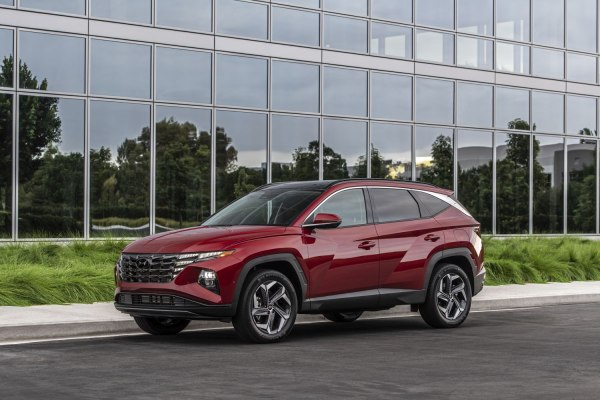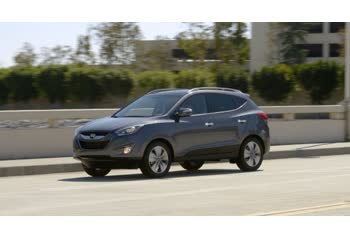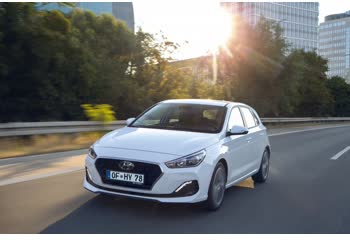Everything you need to know about specifications and performance - Hyundai Tucson 2020 - 1.6 CRDi (136 Hp) Mild Hybrid 4WD DCT

Overview:
What is the engine capacity of a Hyundai Tucson 2020?
The engine capacity of the Hyundai Tucson 2020 is 1598 cm.
Hyundai Tucson 2020 How many horsepower?
The engine power of the Hyundai Tucson 2020 is 136 Hp @ 4000 rpm..
What is the Hyundai Tucson 2020 engine?
Hyundai Tucson 2020 engine is D4FE. (Click to see other cars using the same engine)
How much gasoline does a Hyundai Tucson 2020 consume?
The Hyundai Tucson 2020 consumes 4.7 liters of gasoline per 100 km
General:
Brand: Hyundai
Model: Tucson
Generation: Tucson IV
Modification (Engine): 1.6 CRDi (136 Hp) Mild Hybrid 4WD DCT
Start of production: December, 2020
End of production:
Powertrain Architecture:MHEV (Mild Hybrid Electric Vehicle, power-assist hybrid, battery-assisted hybrid vehicles, BAHV)
Body type:Sports Utility Vehicle (SUV)
Seats: 5
Doors: 5
Engine:
Engine systems: Start & Stop System
Power: 136 hp @ 4000 rpm.
Power per litre: 85.1 hp/l
Torque: 320 nm @ 2000-2250 rpm.
Engine Model/Code:D4FE
Engine displacement: 1598 cm
Number of cylinders: 4
Engine configuration: Inline
Number of valves per cylinder: 4
Fuel injection system: Diesel Commonrail
Engine aspiration: Twin-Turbo, Intercooler
Engine oil capacity: 4.4 l
Coolant: 7.2 l
Engine layout: Front, Transverse
Cylinder Bore: 76.99 mm
Piston Stroke: 85.8 mm
Compression ratio: 15.9
Performance:
Fuel Type: Diesel
Fuel consumption (economy) - urban: 4.7 l/100 km
Fuel consumption (economy) - extra urban: 4.7 l/100 km
Fuel consumption (economy) - urban (NEDC, WLTP equivalent): 4.7 l/100 km
Fuel consumption (economy) - extra urban (NEDC, WLTP equivalent): 4.7 l/100 km
Fuel consumption (economy) - combined (NEDC, WLTP equivalent): 4.7 l/100 km
Fuel consumption (economy) - combined: 4.7 l/100 km
Emission standard: Euro 6d
Acceleration 0 - 100 km/h: 11.6 sec
Acceleration 0 - 62 mph: 11.6 sec
Maximum speed: 180 km/h
Weight-to-power ratio: 11.7 kg/Hp, 85.5 Hp/tonne
Weight-to-torque ratio: 5 kg/Nm, 201.3 Nm/tonne
Acceleration 0 - 60 mph: 11 sec
Electric system:
Gross battery capacity: 0.44 kWh
Space:
Kerb Weight: 1590-1729 kg
Max. weight: 2200 kg
Max. roof load: 100 kg
Max load: 471-610 kg
Trunk (boot) space - maximum: 1725 l
Trunk (boot) space - minimum: 546 l
Permitted trailer load with brakes (12%): 1650 kg
Fuel tank capacity: 54 l
Permitted trailer load without brakes: 750 kg
Permitted towbar download: 100 kg
dimensions:
Ramp-over (brakeover) angle: 16.7°
Length: 4500 mm
Width: 1865 mm
Height: 1651-1653 mm
wheelbase: 2680 mm
Width including mirrors: 2130 mm
Front track: 1615-1630 mm
Rear (Back) track: 1622-1637 mm
Front overhang: 895 mm
Rear overhang: 925 mm
Ride height (ground clearance): 170 mm
Minimum turning circle (turning diameter): 10.92 m
Approach angle: 17.4°
Departure angle: 25.7°
Powertrain, Suspension and Brakes:
Drivetrain Architecture: The Internal combustion Engine (ICE) and the electric motor permanently drive the front wheels of the vehicle, capable of running only in mixed mode, and if necessary through the electrically or mechanically controlled clutch, the rear wheels are driven.
Drive wheel: All wheel drive (4x4)
Number of gears and type of gearbox: 7 gears, automatic transmission DCT
Front brakes: Ventilated discs, 291 mm
Rear brakes: Disc, 302 mm
Assisting systems: ABS (Anti-lock braking system)
Steering type: Steering rack and pinion
Power steering: Electric Steering
Tires size: 215/65 R17; 235/55 R18; 235/50 R19
Wheel rims size: 7.0J x 17; 7.5J x 18; 7.5J x 19
Front suspension: Independent, type McPherson with coil Spring and anti-roll bar
Rear suspension: Independent multi-link Spring suspension with stabilizer
See also

Other generation.
Its production began in 2013 until 2015

Same engine. (D4FE).
Its production began in 2019 until 2020
Write a comment